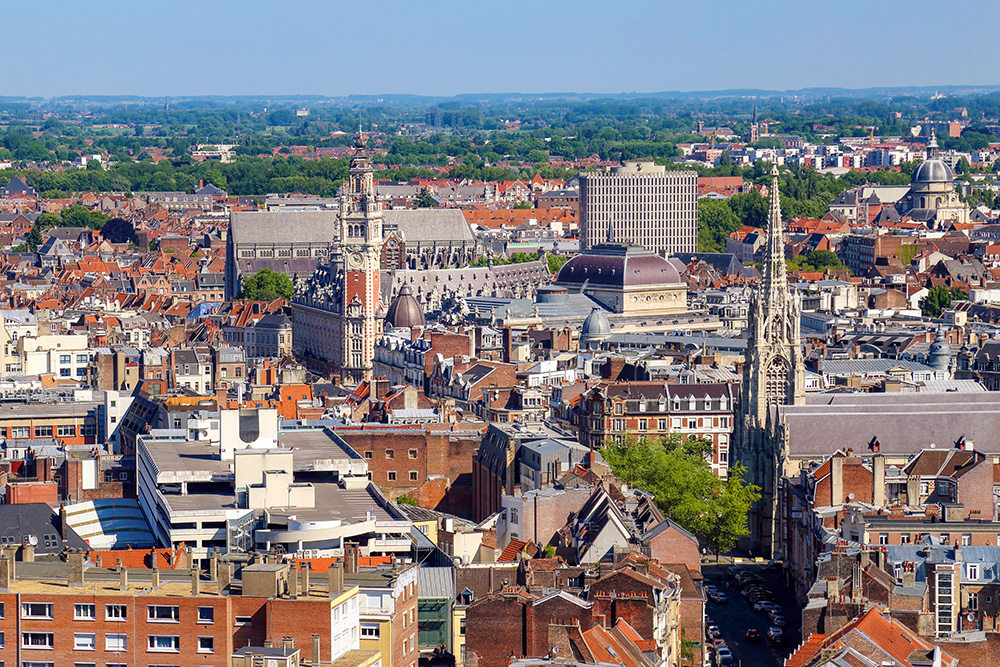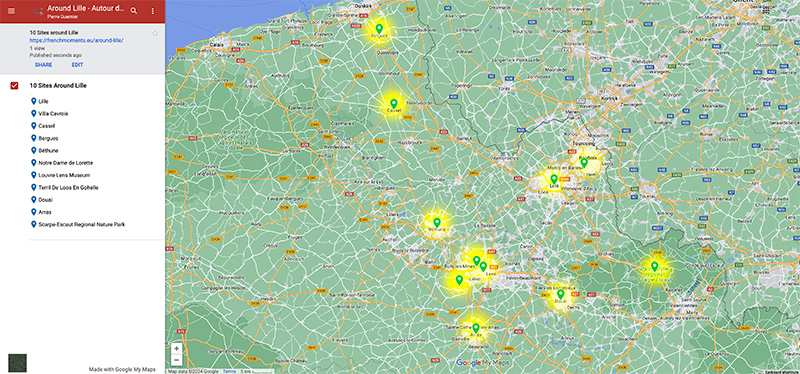Welcome to my guide on the top 10 things to see around Lille! Nestled in the picturesque Hauts-de-France region of northern France, Lille is a city bursting with history, culture, and charm. But venture beyond its bustling streets, and you’ll discover a treasure trove of sights and experiences waiting to be explored – all less than 65 km from the city centre!
For those seeking to explore the area from across the English Channel, why not start your adventure with a ferry journey from Dover to Dunkirk? This convenient and scenic route offers a seamless connection between the UK and the Hauts-de-France region, allowing you to explore Lille and its surrounding wonders quickly. So pack your bags, hop on board, and set sail for an unforgettable journey through northern France’s rich history and natural beauty!
What Lille means to me!
What does Lille mean to you and me?
The Grand Place: A central square surrounded by stunning Flemish architecture and lively cafés.
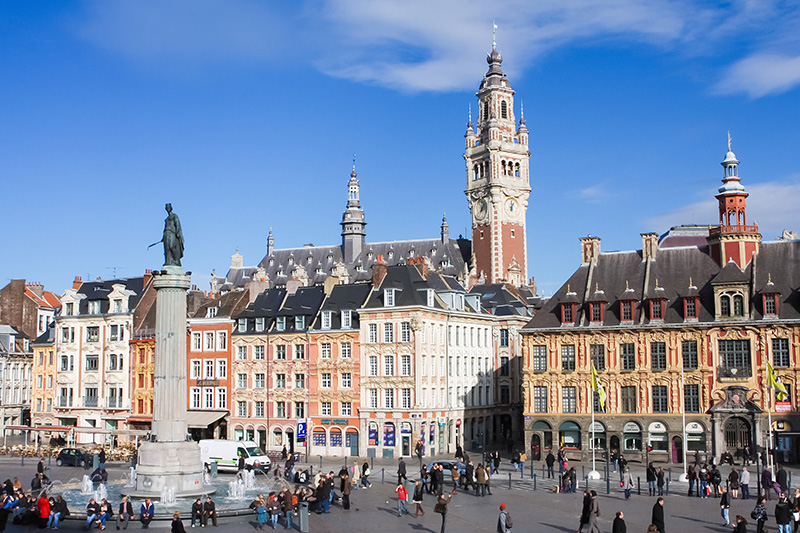
The Vieux-Lille: The charming old town of Lille, known for its cobblestone streets, historic buildings, and quaint shops and cafes, is a beloved destination for locals and visitors alike.
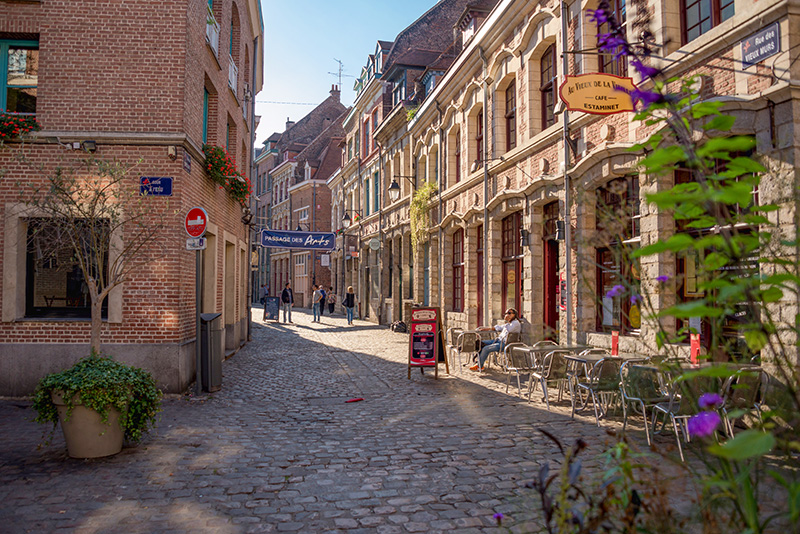
The Palais des Beaux-Arts: One of France’s largest fine arts museums, it houses an impressive collection of paintings, sculptures, and other artworks spanning centuries of European art history.

The Belfries of Lille: The iconic belfries of the Vieille Bourse (Old Stock Exchange) and the Hôtel de Ville (City Hall) are UNESCO World Heritage sites, symbolising the city’s rich architectural heritage and historical significance.
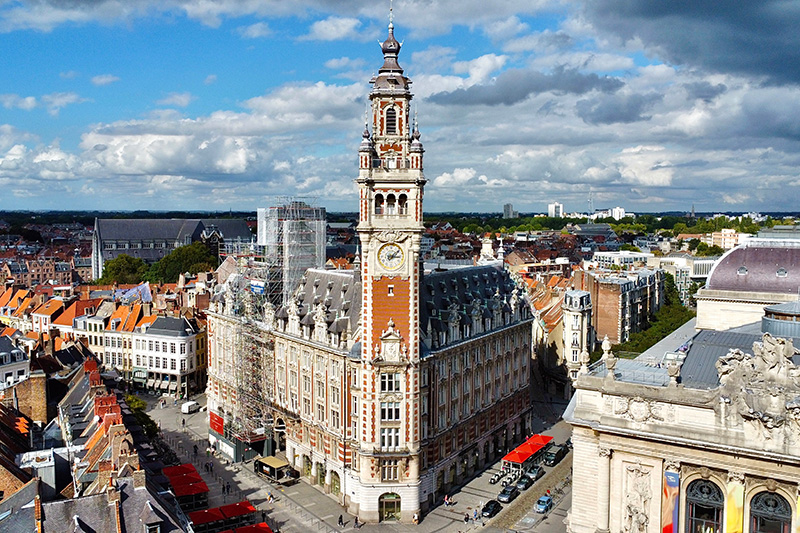
Euralille: This modern district of Lille is known for its futuristic architecture, including the striking Euralille shopping centre, and serves as a hub for business, shopping, and entertainment.

The Grande Braderie de Lille: This annual flea market is one of the largest in Europe, attracting millions of visitors who flock to the city to hunt for bargains and enjoy the festive atmosphere.
![Braderie de Lille © Jean-Frédéric - licence [CC BY 3.0] from Wikimedia Commons](https://frenchmoments.eu/wp-content/uploads/2024/02/Braderie-de-Lille-©-Jean-Frederic-licence-CC-BY-3.0-from-Wikimedia-Commons.jpg)
The Lille Christmas Market: During the festive season, the city transforms into a winter wonderland with its charming Christmas market, offering festive decorations, seasonal treats, and unique gift items.
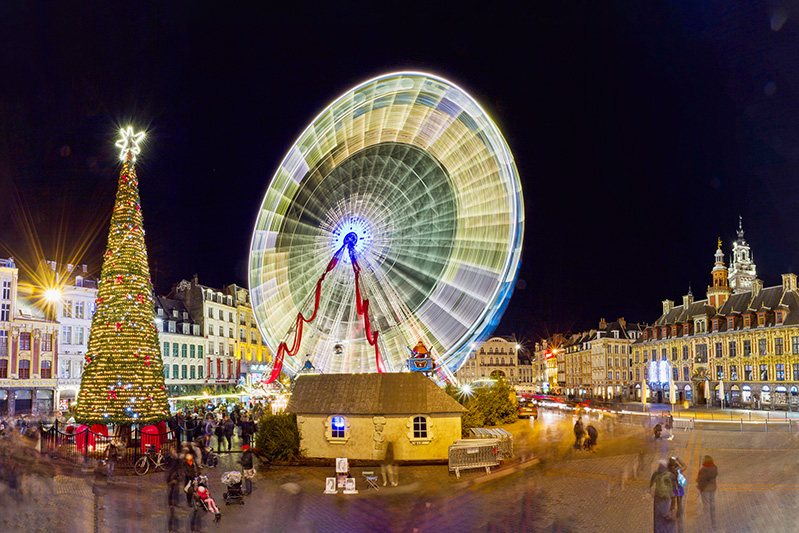
Lille is all this… and much more!
But for now, let’s leave the city walls to explore its surroundings…
What to see around Lille?
Lille is the capital of the Hauts-de-France, a region created in 2016 from the former Nord-Pas-de-Calais and Picardy. The city lies at the northern tip of France, near the border with Belgium, and its urban area is home to a population of over one million.
To avoid having to write an encyclopaedia on the subject (!), I have voluntarily limited myself to a small selection of 10 destinations in France alone within a maximum radius of 65 km.
► Do you have any suggestions for visits to and around Lille? Write them in the comments at the bottom of the article!
Here are the ten main destinations we will discover around Lille:
- Villa Cavrois
- Cassel
- Bergues
- Béthune
- Louvre-Lens
- Loos-en-Gohelle’s spoil tips
- Notre Dame de Lorette Necropolis
- Arras
- Douai
- Scarpe-Escaut Natural Regional Park
Check the exact location of the 10 places on Google Maps.
To help you, I have included links to the corresponding tourist offices for most destinations around Lille. Don’t hesitate to go there to get personal information on natural or cultural sites to discover, hikes to find or the programme of upcoming events.
Let’s start this little trip around Lille with a popular site close to the city centre: the Villa Cavrois!
1. Villa Cavrois
Villa 13 km north-east of Lille
![Villa Cavrois © ViteParallele - licence [CC BY-SA 4.0] from Wikimedia Commons](https://frenchmoments.eu/wp-content/uploads/2024/02/Villa-Cavrois-©-ViteParallele-licence-CC-BY-SA-4.0-from-Wikimedia-Commons.jpg)
The Villa Cavrois in Croix, between Lille and Roubaix, is an icon of 20th-century modernist architecture, designed by the avant-garde architect Robert Mallet-Stevens in 1932. Commissioned by Paul Cavrois, an industrialist from the north of France, this residence was intended to manifest modernity and comfort for his large family. With its clean lines, expansive volumes, and innovative use of materials such as reinforced concrete, marble, and metal, the Villa Cavrois embodies the modernist ideal of living of the time.
A modernist villa
The building is distinguished by its luminous yellow façade, its horizontal strip windows that allow for the influx of natural light, and its roof terrace, revolutionary elements for the era. The interior is equally impressive, with a functional distribution of spaces that prioritises fluid movement, family privacy, and designated areas for hosting receptions. Every detail, from the furniture to the heating and lighting systems, was designed according to the principles of functionality and aesthetics.
A recent restoration
After being neglected for many years, the Villa Cavrois underwent a meticulous restoration that began in 2003 and concluded in 2015. This monumental project returned the house to its original splendour, adhering to the original materials, colours, and construction techniques. Today, the Villa Cavrois is open to the public, offering visitors the chance to dive into the world of architectural modernism and discover the lifestyle of a bourgeois family in the early 20th century.
Visiting the Villa Cavrois is an immersive experience, where each room tells a story, and every detail bears witness to Mallet-Stevens’ ingenuity and his desire to create a beautiful and functional work. It is a place that will inspire lovers of architecture and history and all those fascinated by innovation and design.
Buy your Fast-Track online tickets!
2. Cassel
Historic village 50 km north-west of Lille
![Cassel - Grand Place © Jean-Pol GRANDMONT - licence [CC BY 4.0] from Wikimedia Commons](https://frenchmoments.eu/wp-content/uploads/2024/02/Cassel-Grand-Place-©-Jean-Pol-GRANDMONT-licence-CC-BY-4.0-from-Wikimedia-Commons.jpg)
Perched atop its hill overlooking the plains of Northern France, Cassel is a village whose beauty and charm seem suspended in time. This jewel of Hauts-de-France is renowned for its rich history, dating back to Roman times, and its deeply rooted Flemish culture. A windmill crowns the village, the Moulin de Cassel, which, meticulously restored, continues to dominate the surrounding landscape, offering breathtaking panoramic views of the Flemish countryside.
The picturesque village centre
Cassel’s cobblestoned and winding streets beckon for strolls, leading to welcoming squares, historic buildings, and museums that narrate the local history and Flemish art. Among these museums, the Maison de la Bataille de la Peene delves into the history of the 1677 battle, a pivotal moment that shaped the region. Cassel is also a village of artists, where painters and craftsmen share their passion and expertise in studios open to the public.
Gastronomy and culture
Gastronomy plays a central role in the Cassel experience, with traditional estaminets serving regional dishes in a warm and friendly atmosphere. Flemish specialties, such as potjevleesch (meat terrine in jelly) or waterzooi (fish or chicken stew), are must-tries that delight visitors’ palates.
Cassel is a place of beauty and history and a hub of traditional festivities, including the famous carnival that brings the village to life each year. This celebration, with its colourful costumes, parade giants, and lively music, is a living testament to Flemish culture and the community spirit of Cassel.
Exploring Cassel is to immerse oneself in a world where past and present blend harmoniously, offering a delightful escape for those seeking to absorb history, culture, and natural beauty. This village, with its welcoming atmosphere and endless vistas, is an invitation to discover the hidden treasures of Hauts-de-France.
3. Bergues
Historic village 65 km north-west of Lille

Bergues, nestled in the north of France near Dunkirk, is a small fortified town that has managed to preserve its medieval charm and rich historical heritage. Known for being the backdrop of the French film “Bienvenue chez les Ch’tis” (Welcome to the Sticks), Bergues is often called the “Little Bruges of France” due to its picturesque canals and Flemish architecture. Its well-preserved ramparts invite visitors on a historical stroll, offering breathtaking views of the town and its surroundings.
A Unesco-listed site
At the heart of Bergues proudly stands its belfry, a UNESCO World Heritage site, symbolising the freedom and independence of the northern cities. With its melodiously playing carillon, this historical monument is an essential landmark for visitors. At its base, the weekly market enlivens the square and fills the air with the scents of local produce, reflecting the richness of the regional cuisine.
History and art enthusiasts will be delighted by a visit to the Mont-de-Piété museum, a former pawnbroking establishment dating back to the 17th century, now housing a remarkable collection of Flemish artworks. Bergues also boasts an impressive religious heritage, with the Saint-Martin church and its magnificent organ testifying to the region’s spiritual hunger and religious art.
Gastronomy and culture
The town is also renowned for its gastronomy, especially the Bergues cheese, a local delight that entices food lovers. The typical estaminets offer an authentic culinary experience, where one can savour Flemish specialties in a friendly and warm atmosphere.
With its cobblestone streets, charming bridges, and historic buildings, Bergues is an invitation to relax and explore. The town hosts cultural and festive events throughout the year, such as the carnival and the ducasse, celebrating local traditions and strengthening community. Visiting Bergues is to dive into a world where history, culture, and friendliness meet, offering an unforgettable experience to those seeking to uncover the hidden treasures of Northern France.
Learn more about Bergues on the blog
4. Béthune
Historic town 40 km west of Lille
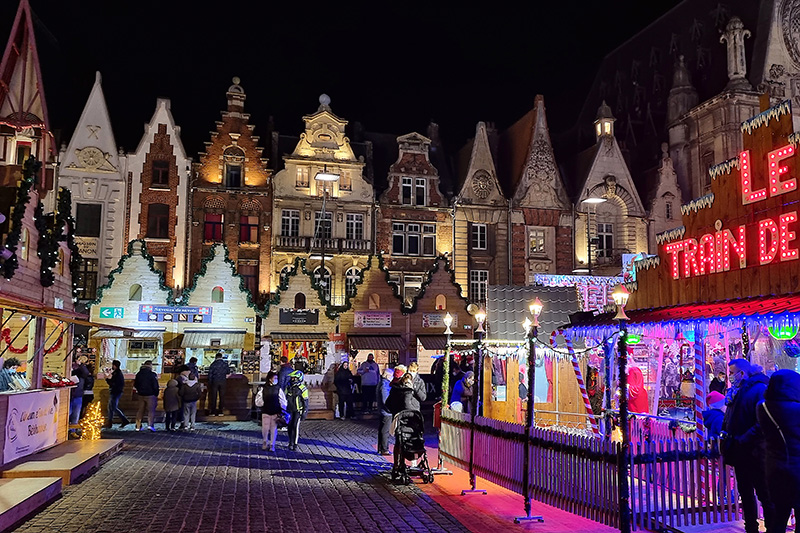
Béthune is a city that offers a surprising blend of historical heritage and contemporary dynamism. Its heart beats to the rhythm of the Grand’Place, a beautifully preserved central square lined with Flemish façade houses that testify to its rich past. The city’s highlight is undoubtedly its belfry, symbolic of the independence of northern cities and listed as a UNESCO World Heritage site. With its distinctive silhouette, this belfry provides a breathtaking view of the city and its surroundings from its summit, which is open to the public.
Culture in Béthune
Beyond its architecture, Béthune is a lively town with a cultural calendar full of events, festivals, and markets that animate its streets throughout the year. The city also hosts the Regional Ethnology Museum in the former town hall, where visitors can explore local history and traditions through fascinating exhibitions.
Shopping and gastronomy enthusiasts will delight in Béthune, thanks to its numerous shops, designer boutiques, and restaurants offering local specialties. The estaminets, typical regional cafes, provide a warm atmosphere to enjoy artisanal beers and regional dishes in an authentic setting.
A vibrant Christmas market
The community spirit of Béthune is palpable, especially during the famous Christmas market, which transforms the Grand’Place into a magical village, drawing visitors and residents alike to craft stalls, delicacies, and entertainment for all ages.
Finally, Béthune is not just about its historic centre. The city is surrounded by green landscapes, offering numerous hiking and outdoor activities possibilities. Its proximity to the Artois hills and regional natural parks makes it an ideal starting point for exploring its natural beauty.
Visiting Béthune is discovering a city where past and present meet, creating a unique atmosphere that appeals to history buffs and those seeking authentic cultural and gastronomic experiences.
Learn more about the Béthune Christmas Market on the blog
5. Louvre-Lens
Museum 40 km south of Lille
![Louvre-Lens Museum © Jean-Pol GRANDMONT - licence [CC BY 3.0] from Wikimedia Commons](https://frenchmoments.eu/wp-content/uploads/2024/02/Louvre-Lens-Museum-©-Jean-Pol-GRANDMONT-licence-CC-BY-3.0-from-Wikimedia-Commons.jpg)
The Louvre-Lens, inaugurated in December 2012, stands as a shining example of cultural decentralisation in France. It is in Lens, at the heart of the former Nord-Pas-de-Calais mining basin. Designed by the Japanese architectural firm SANAA, the museum is distinguished by its modern and minimalist design, with vast glass spaces that bathe the exhibition rooms in soft natural light, creating a welcoming and luminous atmosphere for the artworks.
A unique museum
The Louvre-Lens was born from a desire to bring the prestigious collections of the Louvre Museum in Paris closer to a broader audience, making them accessible in a region marked by its industrial past. The museum revolves around the Gallery of Time, a semi-permanent exhibition that is unique, where works are presented chronologically from antiquity to the 19th century, offering an exceptional journey through the history of art.
This innovative presentation allows visitors to grasp stylistic and technical evolutions through the ages, establishing fascinating links between civilisations and cultures. In addition to the Gallery of Time, the Louvre-Lens regularly hosts major international temporary exhibitions, exploring various themes and enriching the dialogue between the works and visitors.
The museum is set within a 20-hectare landscaped park, designed as a breathing space for the city and its inhabitants. This park, which incorporates remnants of a mining past, is a place for walking and reflection, where art and nature meet in perfect harmony.
A role in regional revitalisation
The Louvre-Lens plays a significant role in revitalising the region, attracting visitors from France and abroad, and actively participating in the local cultural life. It represents a successful model of cultural dissemination, demonstrating that art and culture are potent vectors of social and economic transformation.
Visiting the Louvre-Lens is discovering a decidedly modern museum, where each work tells a universal story in a setting inviting dialogue and contemplation. It is an enriching experience that offers a new perspective on the treasures of the Louvre and contributes to sharing them with an ever-wider audience.
6. Loos-en-Gohelle’s spoil tips
Formal industrial estate 40 km south-west of Lille
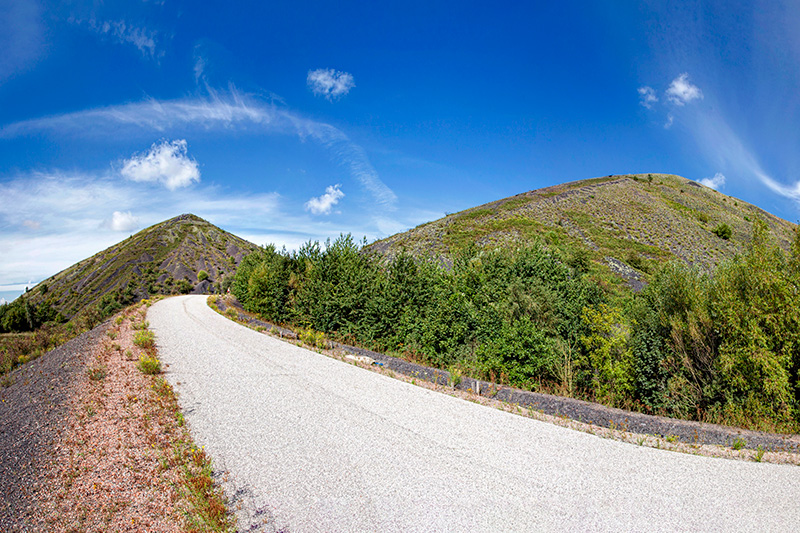
The twin spoil tips of Loos-en-Gohelle, near Lens, stand as symbolic features of the mining landscape of Northern France, bearing witness to a bygone era when coal extraction was at the heart of the regional economy. These two artificial mountains, resulting from over a century’s accumulation of mining waste, now dominate the landscape with unexpected majesty, transforming from industrial remnants into symbols of environmental rehabilitation and cultural heritage.
Some of Europe’s tallest spoil tips
Rising over 100 metres high, the spoil tips no. 11 and 19 from the Lens 11/19 mine shaft are among the largest in Europe, offering spectacular panoramas over the Gohelle plain and beyond. These grey giants, partly covered in vegetation that has reclaimed them over the decades, have become a haven for biodiversity, home to various fauna and flora, some species of which have become rare in other parts of the region.
The twin spoil tips are not only a site of memory, recalling the hard labour of miners and the significance of the coal industry in local history, but they have also become a space for leisure and environmental education. Marked hiking trails allow visitors to ascend to the summit to admire the landscape and understand the impact of human activity on nature and the ecological conversion efforts undertaken.
A Unesco-listed site
The site has been listed as a UNESCO World Heritage Site since 2012, as part of the Nord-Pas-de-Calais Mining Basin, thus recognising its historical and cultural value and its example of transformation and renewal. Educational and tourist initiatives, such as guided tours and workshops, are regularly organised to raise awareness of the region’s mining history and the importance of environmental preservation.
Visiting the twin spoil tips of Loos-en-Gohelle offers the experience of a unique landscape where industrial history intertwines with nature, providing a living lesson on the environment’s resilience and the importance of collective memory in shaping the future. It is a place that inspires and reminds us that even the scars of the past can be transformed into spaces of beauty and learning for future generations.
7. Notre-Dame-de-Lorette Necropolis
WWI Remembrance Site 50 km south-west of Lille
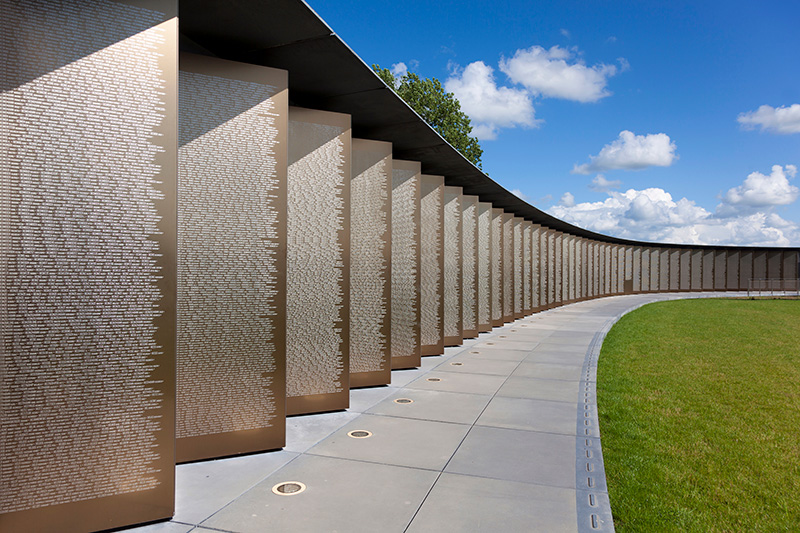
The Notre-Dame-de-Lorette Necropolis, located near the village of Ablain-Saint-Nazaire in the Pas-de-Calais département, is a primary memorial site dedicated to soldiers who fell during the First World War. Established on a hill overlooking the Artois plain, this necropolis is the largest in France, housing the graves of over 40,000 French and German soldiers. It is a place of remembrance and reflection, where visitors can pay homage to the fallen soldiers and contemplate the horrors of war.
The necropolis’ basilica
At the centre of the necropolis stands the Notre-Dame-de-Lorette Basilica, built in 1927, which houses a crypt containing the remains of unknown soldiers. With its 52-metre-high tower, this imposing church symbolises peace and reconciliation, reminding us of the need to strive for a better future, free from conflict and suffering.
Surrounding the basilica are fields of white crosses, meticulously aligned, each marking a soldier’s grave. Among these graves, some are poignantly decorated by the relatives of the fallen, bearing witness to the pain and attachment to those who sacrificed their lives for freedom and peace.
A place of history and remembrance
The Notre-Dame-de-Lorette Necropolis is also a place of history and education, with a museum and interpretation centre dedicated to the First World War. These institutions offer visitors a captivating insight into soldiers’ lives on the front lines, the military strategies employed, and the devastating consequences of the conflict on the region and its inhabitants.
Every year, commemorative ceremonies and tributes are held at the Notre-Dame-de-Lorette Necropolis, bringing together veterans, families of soldiers, and government representatives worldwide to honour the memory of war victims. It is a place of gathering and remembrance, reminding future generations of the sacrifices made to secure freedom and peace in the world.
8. Arras
Historic town 55 km south of Lille
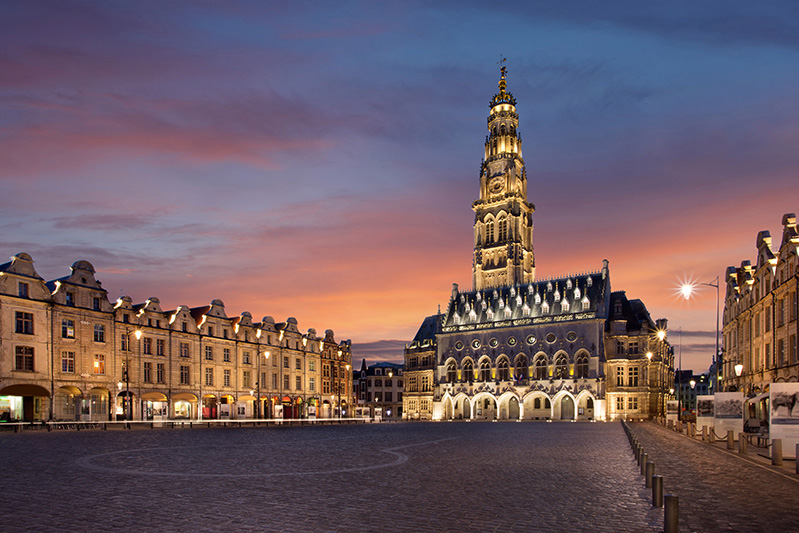
Arras, located between Amiens and Lille, is a city steeped in history and charm, renowned for its well-preserved Flemish architecture, picturesque squares, and vibrant cultural scene. The city’s heart is the Grand’Place, a UNESCO World Heritage site adorned with elegant 17th-century townhouses and the iconic belfry. From its summit, this impressive structure offers panoramic views of the city and its surroundings, providing a glimpse into Arras’ rich past and strategic importance in the region.
A WWI memory site
Beyond its architectural splendour, Arras is also known for its underground tunnels, remnants of the city’s medieval past and later used during World War I. The Boves, a network of tunnels and caverns beneath the city centre, allow visitors to explore this hidden world and learn about its fascinating history through guided tours.
Culture in Arras
Art and culture thrive in Arras, with numerous museums and galleries showcasing the region’s artistic heritage. The Arras Museum of Fine Arts, housed in the former abbey of Saint-Vaast, boasts an impressive collection of paintings, sculptures, and decorative arts from the Middle Ages to the present day. The Wellington Quarry, a museum dedicated to the memory of the soldiers who fought in the Battle of Arras during World War I, provides a poignant reminder of the city’s wartime past.
Local gastronomy
Arras is also a culinary destination, with its lively markets, gourmet restaurants, and traditional brasseries offering a taste of regional cuisine. Local specialties such as the famous tarte au maroilles (maroilles cheese tart) and carbonade flamande (Flemish beef stew) are must-tries for visitors looking to savour the flavours of northern France.
Events and the Christmas market
Arras hosts various cultural events and festivals throughout the year, including the renowned Main Square Festival, which attracts music lovers worldwide with its international artists. The Christmas market, held in the historic city centre, transforms Arras into a winter wonderland, with festive lights, seasonal treats, and traditional crafts adding to the festive atmosphere.
Arras is a city that effortlessly combines its rich heritage with modern vitality, offering visitors diverse experiences, from historical exploration to culinary delights and cultural immersion. Whether strolling through its cobblestone streets, admiring its architectural treasures, or sampling its culinary delights, Arras never fails to enchant and captivate all who visit.
The Squares of Arras on the blog
9. Douai
Historic town 40 km south of Lille
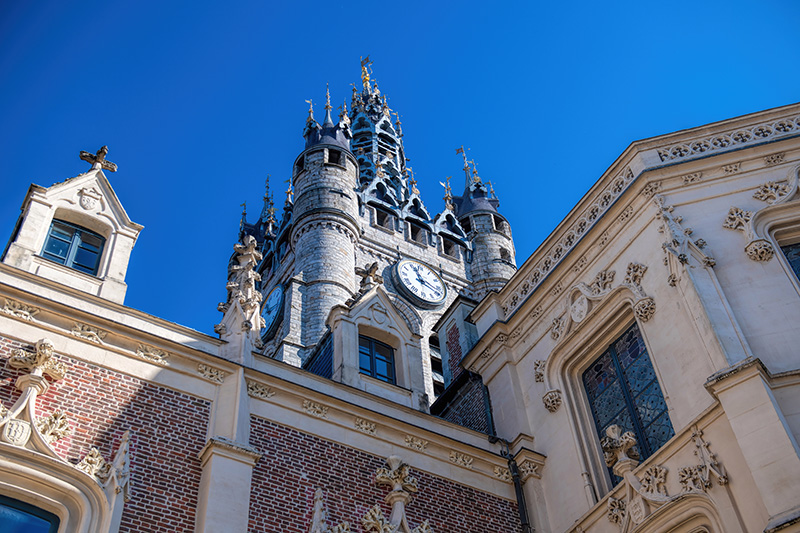
Douai is a city brimming with history, culture, and charm. Its rich heritage dates back to Roman times, evident in its picturesque architecture, historic landmarks, and vibrant atmosphere. The heart of Douai is the Grand’Place, a bustling square lined with elegant Flemish-style buildings, cafes, and shops, where locals and visitors gather to soak in the lively ambience and admire the architectural splendour.
The emblematic Douai Belfry
One of Douai’s most iconic landmarks is the Belfry, a UNESCO World Heritage site, towering over the city skyline. This imposing structure, dating back to the 14th century, offers panoramic views of Douai and the surrounding countryside from its summit, providing a fascinating glimpse into the city’s past and strategic importance in the region.
Art and culture in Douai
Art and culture thrive in Douai, with numerous museums and cultural institutions showcasing the city’s artistic heritage. The Musée de la Chartreuse, housed in a former Carthusian monastery, is home to an impressive collection of fine arts, including works by renowned Flemish and French masters. The Musée-parc archéologique Arkéos, located on the right bank of the River Scarpe, allows visitors to explore the region’s natural history and archaeological treasures.
Douai is also known for its annual festivals and cultural events, including the Douai Gayant Festival, a lively celebration featuring giant puppets, music, and street performances that attract thousands of visitors across the region. The city’s vibrant cultural scene is further enhanced by its theatres, concert halls, and art galleries, which host diverse performances and exhibitions annually.
Local gastronomy
Culinary delights abound in Douai, with its traditional brasseries, gourmet restaurants, and lively markets offering regional cuisine. Local specialties such as the famous douillons de Douai (apple pastries) and potjevleesch (meat terrine) are must-tries for visitors looking to experience the flavours of northern France.
Douai’s charming streets, historic landmarks, and vibrant cultural scene make it a delightful destination for visitors seeking to immerse themselves in the rich heritage and lively atmosphere of the Hauts-de-France region. Whether exploring its museums and galleries, sampling its culinary delights, or simply soaking in the beauty of its architecture, Douai offers a wealth of experiences that captivate and enchant all who visit.
10. Scarpe-Escaut Natural Regional Park
Natural area 40 km south-east of Lille
![River Scarpe in Marchiennes © Pierre André Leclercq - licence [CC BY-SA 4.0] from Wikimedia Commons](https://frenchmoments.eu/wp-content/uploads/2024/02/Scarpe-in-Marchiennes-©-Pierre-Andre-Leclercq-licence-CC-BY-SA-4.0-from-Wikimedia-Commons.jpg)
The Parc Naturel Régional Scarpe-Escaut, between Douai and Valenciennes, is a haven of natural beauty and biodiversity. Encompassing diverse landscapes ranging from lush forests and meandering rivers to picturesque wetlands and rolling hills, this regional park offers visitors a wealth of outdoor experiences and opportunities for exploration.
A popular green area
One of the highlights of the Scarpe-Escaut Regional Natural Park is its extensive network of hiking and cycling trails, winding through pristine countryside and offering breathtaking views of the surrounding scenery. Whether trekking along the banks of the Scarpe River or cycling through tranquil woodland paths, outdoor enthusiasts will find endless opportunities to connect with nature and discover the park’s hidden gems.
The park also has many wildlife, including rare bird species, amphibians, and mammals. Birdwatchers will delight in spotting kingfishers, herons, and other waterfowl along the park’s waterways, while nature lovers may encounter deer, foxes, and even elusive European otters in the dense forests and meadows.
In addition to its natural wonders, the Scarpe-Escaut Regional Natural Park is dotted with charming villages, historic landmarks, and cultural sites, offering visitors the chance to immerse themselves in the local heritage and traditions of the Hauts-de-France region. From quaint rural churches and ancient ruins to traditional farmsteads and artisan workshops, the park is a treasure trove of cultural treasures waiting to be discovered.
A vital role in conservation and environmental education
The Scarpe-Escaut Regional Natural Park also plays a vital role in conservation and environmental education, with initiatives to preserve the region’s natural habitats, promote sustainable agriculture, and raise awareness about the importance of biodiversity and ecological stewardship. Visitors can participate in guided nature walks, educational workshops, and conservation projects, gaining a deeper understanding of the delicate balance between human activity and the natural world.
Whether seeking outdoor adventure, wildlife encounters, cultural immersion, or simply a peaceful retreat into nature, the Parc Naturel Régional Scarpe-Escaut offers something for everyone. With its stunning landscapes, diverse ecosystems, and rich cultural heritage, this regional park is a true gem of the Hauts-de-France region, inviting visitors to experience the beauty and tranquillity of the French countryside.
For more information
Other blog posts that might interest you
Some of our pages about Lille and Hauts-de-France on the blog:
- Our blog article on Lille Old Town
- The Christmas Market of Lille
- The Belfries of Flanders
- The historic town of Bergues
- The Carnival of Dunkirk
- The Flemish Squares of Arras
- The Gothic Cathedral of Amiens
More info about Lille:
- Visit the Tourist office board of Lille
- Read more about Lille on Wikipedia
- Book your accommodation in Lille
🚙 Rent a car in Lille
Things to do in and around Lille
Looking for activities and things to do in and around Lille? Check out the offers from our partner Get Your Guide:
About the illustrations in the article
Most of the photos are ours (© French Moments). However, I have selected some photos (including the Featured Image of this article) from Depositphotos, a commercial platform that brings authors of high-quality licensed stock photos, graphics, vectors and videos together with appreciative buyers.

